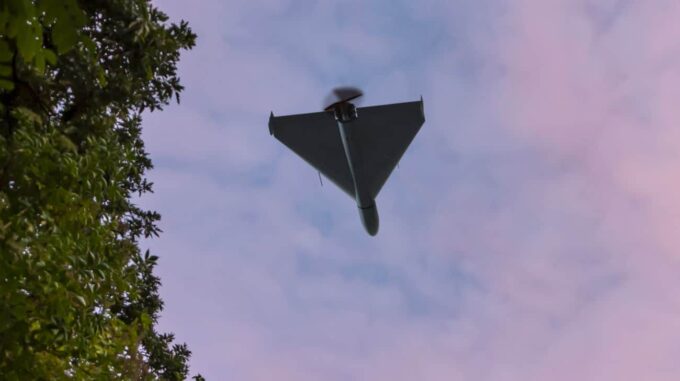Expectations of a ceasefire: Russian forces again launched attack drones from northern Ukraine

On the eve of the planned start of the promised ceasefire on May 12, which is expected to last at least 30 days, and amidst international efforts to cease active hostilities, Russian forces staged another provocation. On the evening of May 11, they carried out kamikaze drone strikes from the northern direction, catching Ukrainian defenders off guard and confirming that the ceasefire may become only a declarative statement aimed at creating an illusion of a halt in fire. According to the Ukrainian Air Forces, starting from 23:08, the first signs of enemy attack drones appeared in the Chernihiv region, flying southwest and southeast. Later, warnings primarily appeared for Sumy — targets were recorded in the central part of the region, likely aimed at an attack. Around 23:29, news reached Poltava — here, a potential threat of enemy UAVs entering from the northern direction was announced. In the late afternoon and evening hours, alarms with automatic alerts sounded simultaneously in Kyiv, Zaporizhzhia, and Dnipropetrovsk regions, as well as in cities with significant strategic importance. At the same time, at 00:20 on May 12, a few hours after the beginning of night provocations, the Air Forces updated their data: groups of enemy attack UAVs were recorded near the northern, eastern, and western borders of Ukraine. They were conducting strikes from the northern border of the Russian Federation, from the Kursk region, as well as from the southern and central territories of Chernihiv, Sumy, and Poltava regions, toward Zaporizhzhia and Dnipropetrovsk regions. A significant update was that around 00:26, from the suburbs of the Kursk region, Russia began launching new groups of enemy drones into Ukrainian airspace over Sumy, indicating Russia’s ongoing aggressiveness and intent to destabilize the situation even during the period declared as a "ceasefire" by international partners and Kyiv. This is yet another evidence that declarations of ceasefire are more political gestures than actual cessation of hostilities. Background: Political and Diplomatic Context On May 10, Kyiv hosted a summit of leaders from a "Coalition of Decisive" countries, including European nations, the USA, and other Ukraine allies. Participants explicitly demanded that Russia cease hostilities unconditionally starting May 12 for at least 30 days. They emphasized that the goal is not just a short-term truce but creating conditions for genuine negotiations and the resumption of diplomatic dialogue, which would help reduce human losses and long-term destruction. The coalition noted that if Russia refuses to comply, Europe and the US plan to impose additional sanctions and economic restrictions to limit the Russian regime’s ability to carry on the war in the future. Prior to the summit, a separate conversation was held with former US President Donald Trump. They agreed to intensify diplomatic pressure and keep the situation under control to prevent Russian aggression from changing its character. Meanwhile, Ukrainian President Volodymyr Zelenskyy firmly stated his readiness to negotiate in any format, but only on the condition of a resolute and unconditional cessation of fire lasting at least 30 days, which would create prerequisites for further dialogue. At the same time, Russian President Vladimir Putin, in his statement on May 11, said he was open to "direct negotiations" with Kyiv in Istanbul, scheduled for May 15. However, he did not mention a more ambitious and long-term 30-day ceasefire, raising expectations of provocations and attempts to destabilize the situation in Ukrainian society and on the frontlines. Meanwhile, the US strongly supported this position: President Donald Trump expressed that Ukraine should accept the negotiations offered by Putin immediately, without delay. He also emphasized that these negotiations do not mean endorsing a prolonged "frozen" war or a 30-day ceasefire that Russia has yet to observe. Overall, Ukrainian President Zelenskyy issued an open invitation to Russia and its leader in Turkey on May 15. He stated that Ukrainian forces will respond mirror-like to any actions by Russia — whether it continues hostilities or stops them — and retain the right to an adequate response. Conclusions Thus, the situation remains tense and requires maximum caution and diplomatic balance. Despite the declarative announcement of a ceasefire, Russian drones continue attacking Ukrainian territories with unpredictable night force, casting doubt on the reality of any agreements. It is clear that achieving peace is a long and complex process, which demands not only political will but also honest and consistent efforts from both sides, supported by international partners.

